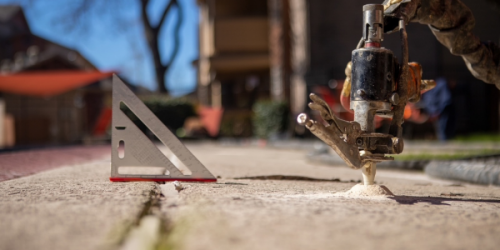Q&A Forums
minimum thickness documentation Post New Topic | Post Reply
| Author | Comments |
|---|---|
|
Circle-D
Posted: Jun 07, 2007 10:03 PM
|
minimum thickness documentation
Hi Mason,I'm relativley new to the SPF business and have been searching for answers to some questions. We all know that 2" (R-12+-)of closed cell foam is still far superior to 6" (R-19)of filterglass but is this documented anywhere? Most customers in my rural area choke on the dollar figure given for R-19 worth of foam. Some just can't see the forest for the trees so to speak. In trying to sell an alternative to filterglass I try for 2" but many just can't understand it is better than 6" all day long. They are stuck on the "R" number. Does anyone know of any test reports or evalutions of this that I could use to support my statements? Thanks |
|
mason
Posted: Jun 08, 2007 07:27 AM
|
Circle D, Legally you can't claim a higher R value than the FTC test procedures dictate. FTC tests require that you measure R-values at a mean temperature of 75 degrees F and the foam is aged 6 months. You can however, compare the relative performance of the insulation to another in different situations. And if the test procedures are acceptable to a building code official, he may allow the use of lessor R-values than the prescriptive code requires based on performance. SPFA conducted thermal wall performance testing of sprayfoam wall assemblies at Architectural Testing Inc.(ATI) in York, PA. They sprayed 1.5 inches of closed cell foam to OSB and to 1/2 inch of Iso board and measured it according to ASTM C 1363 test procedures. But they allowed a specific amount of air infiltration into the wall assembly to simulate a 15 mph wind. They also tested the wall assembly at different outside temperatures. The results; The SPF wall tested at much higher percentage of its labeled R value than the fiberglass insulated wall. ATI is a ICC code accredited lab and the ASTM 1363 test procedure is an code acceptable test procedure. (though this was a modification of the FTC protocol) Contact SPFA's Dan Benedict for a copy of the test results or go to sprayfoam.org for an article on the testing in their news and media section. |
|
Circle-D
Posted: Jun 08, 2007 09:10 PM
|
Thank you for your help I'll look that up. |
|
Gerry Wagoner
Posted: Jun 11, 2007 09:31 PM
|
Hi CD. Mason is correct regarding the ICC test (of course). Neil Ganser has conducted similar testing with Corbond foam, and made several discoveries. That R-13 wall (fg) can be multiplied by a factor of .35 to determine it's true R-value (at 18° & 15-mph wind). Yield under those conditions = an R-value of 4.55. Not too dang much. These limitations are part of the reason that the UK switched to a U-value standard 15-months ago, in an effort to achieve accuracy & equity in insulation systems. Air infiltration accounts for half of energy loss in a wall assembly. Installing a product that has no ability to restrict air leakage places the building owner at a 50% disadvantage right from the start. Some building contractors perform an "airseal" on the wall assembly in order to combat that weakness, but they are helpless to interupt the convection looping that occurs within the fiberglass batt itself. foam good, olger |
|
Circle-D
Posted: Jun 11, 2007 10:12 PM
|
Thank you for your input Olger. The people with the experience on this message board are always an asset. Foam Best |





























